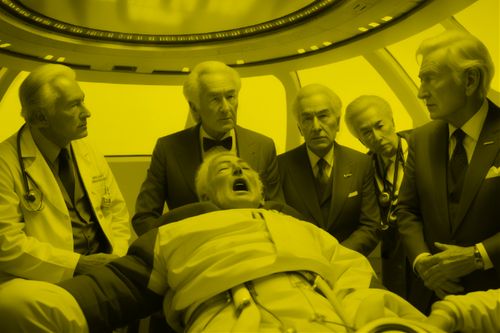Okay, so rich folks like Elon Musk and Jeff Bezos want to take affluent chums to the edge of space, and get richer while at it. But for these space joyride passengers, following their hearts could literally break their hearts. The demographic of commercial space travelers is shifting to include older, wealthy individuals who might not exactly be the best example of a healthy bloke.
We're talking about a new breed of space cowboys - the silver-haired, well-heeled adventurers who might be more familiar with their medicine cabinets than zero-gravity training. Unlike professional astronauts, these space tourists don't have to bother with rigorous health screenings or physical training.
This delightful trend means that space mission planners now have to consider a wide array of health conditions, like heart failure and diabetes. Heart failure, which affects over 100 million people globally, is crucial for multiple reasons. Space medicine used to focus on the effects of microgravity on healthy astronauts.
Healthy individuals can adapt, but heart failure patients face much higher risks.
But now, with non-professional astronauts who come with a plethora of preexisting health conditions, there's a pressing need to understand how microgravity impacts these less-than-ideal specimens that spice things up with a smorgasbord of chronic illnesses. Heart failure, diabetes - the more, the merrier! In a recent Frontiers in Physiology paper, scientists used a mathematical model of the heart and lung system to simulate how microgravity might affect people who aren't exactly in astronaut shape and have heart conditions.

In the microgravity of space, the human body undergoes significant changes, like the charmingly named 'puffy face bird leg' syndrome. Picture a person with a swollen, puffy face and ridiculously skinny legs—quite the image. This fluid shift reduces venous pooling in the legs and increases venous pressure in the upper body. While healthy individuals can adapt, heart failure patients face much higher risks.
Heart failure isn't one-size-fits-all either. One type involves a weakened heart that can't pump blood effectively, while the other is characterized by the heart's inability to relax and fill properly. Each type presents unique challenges that need to be studied separately to grasp the specific risks and necessary countermeasures in space.
It's like unraveling the mysteries of how microgravity might play with different flavors of heart conditions. Who knows? Your next seatmate on that suborbital flight might just be your cardiologist. But it's not just the hearts of these rich old blokes that are at risk, but the billions of not-so-rich living on Earth, because these rockets pump a heck ton of pollutants.
A mere 90-minute jaunt to the edge of space now rivals a boring old 10-hour trans-Atlantic flight in pollution. And here's the kicker - you'll be single-handedly matching the carbon footprint of 278 ordinary folks. Talk about efficiency! But why stop there?
These space tourism rockets really up the ante, producing a carbon footprint roughly 100 times that of a long-haul flight. Because clearly, the best way to appreciate our planet is by damaging it as much as possible in the shortest time frame. Lovely!

